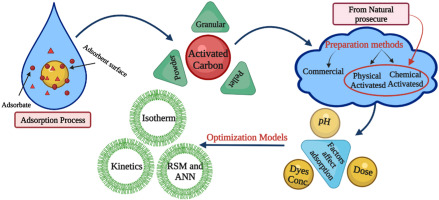Breadcrumb
Chitosan/carbon nanotube composite beads: Preparation, characterization, and cost evaluation for mercury removal from wastewater of some industrial cities in Egypt
Composite beads composed of chitosan (CS) with different carbon nanotubes (CNTs) were prepared by the incorporation of single-walled carbon nanotubes (SWCNTs), multiwalled carbon nanotubes (MWCNTs), and carboxylic multiwalled carbon nanotubes (MWCNT-COOHs). A protected crosslinking method was used for the preparation of the CS/CNTs beads by the reaction of the beads with Hg(II) as the protector. Scanning electron microscopy, Fourier transform infrared spectroscopy, and thermogravimetric analysis were used to characterize the prepared beads. The adsorption performance of the prepared beads was investigated for the removal of Hg(II). The results show that beads prepared by the protected crosslinking technique removed 2.5 times more Hg(II) from solution than beads prepared by normal crosslinking. The maximum Hg(II) removal values were 148.7, 183.2, 167.5, and 172.7 mg/g by CS, MWCNT-COOH-impregnated CS beads, MWCNT-impregnated CS beads, and SWCNT-impregnated CS composite beads, respectively. The optimum removal conditions were pH = 4, contact time = 40 min, and temperature = 70°C. The equilibrium adsorption isotherm data of the beads exhibited a better fit to the Langmuir isotherm model. The reusability of Hg(II) sorption by the prepared beads was investigated to evaluate their repeated availability performance in water treatment. Quantitative removal of mercury from industrial wastes was demonstrated. A statistical analysis of the replacement cost of these sorbents revealed that SWCNTs, MWCNTs, and MWCNT-COOH could possibly be cost-effective sorbents in water treatment, regardless of their high unit cost at this time. © 2011 Wiley Periodicals, Inc.




